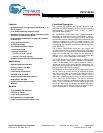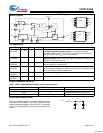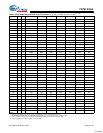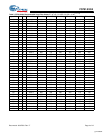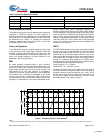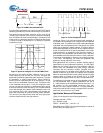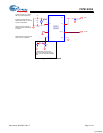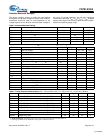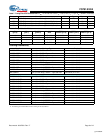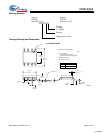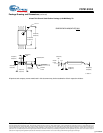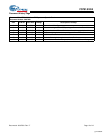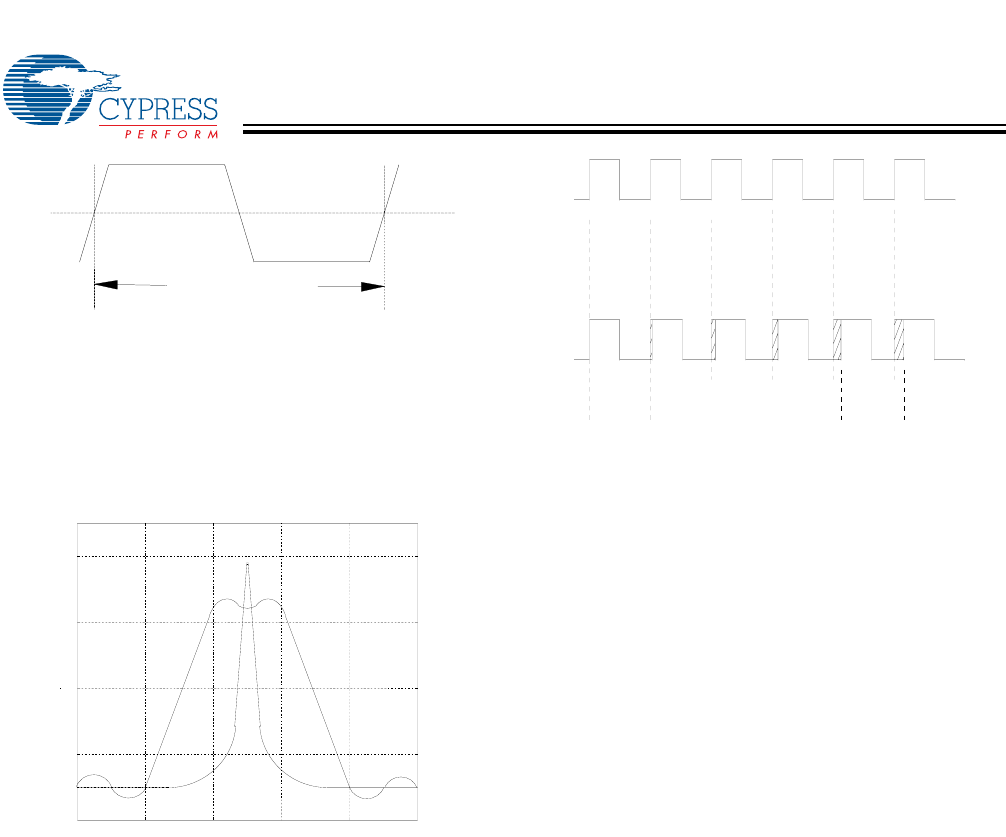
FS781/82/84
Document #: 38-07029 Rev. *F Page 6 of 12
From the above parameters, the output clock at FSOUT will be
sweeping symmetrically around a center frequency of 20 MHz.
The minimum and maximum extremes of this clock will be
+200 kHz and –200 kHz. So we have a clock that is sweeping
from 19.8 MHz to 20.2 MHz and back again. If we were to look
at this clock on a spectrum analyzer we would see the picture
in Figure 3. Keep in mind that this is a drawing of a perfect
clock with no noise.
We see that the original 20-MHz reference clock is at the
center frequency (Cf), and the min. and max. extremes are
positioned symmetrically about the center frequency. This type
of modulation is called Center-Spread. Figure 4 shows a
20-MHz clock as it would be seen on an oscilloscope. The top
trace is the non-modulated reference clock. The bottom trace
is the modulated clock at pin 6. From this comparison chart
you can see that the frequency is decreasing and the period
of each successive clock is increasing. The Tc measurements
on the left and right of the bottom trace indicate the max. and
min. extremes of the clock. Intermediate clock changes are
small and accumulate to achieve the total period deviation.
The reverse of this figure would show the clock going from
minimum extreme back to the high extreme.
Looking at Figure 3, you will note that the peak amplitude of
the 20-MHz non-modulated clock is higher than the wideband
modulated clock. This difference in peak amplitudes between
modulated and unmodulated clocks is the reason why SSCG
clocks are so effective in digital systems. This figure refers to
the fundamental frequency of a clock. A very important charac-
teristic of the SSCG clock is that the bandwidth of the funda-
mental frequency is multiplied by the harmonic number. In
other words, if the bandwidth of a 20-MHz clock is 200 kHz,
the bandwidth of the third harmonic will be 3 × 200, or 600 kHz.
The amount of bandwidth is relative to the amount of energy
in the clock. Consequently, the wider the bandwidth, the
greater the energy reduction of the clock.
Most applications will not have a problem meeting agency
specifications at the fundamental frequency. It is the higher
harmonics that usually cause the most problems. With an
SSCG clock, the bandwidth and peak energy reduction
increases with the harmonic number. Consider that the
eleventh harmonic of a 20-MHz clock is 220 MHz. With a total
spread of 200 kHz at 20 MHz, the spread at the eleventh
harmonic would be 2.20 MHz, which greatly reduces the peak
energy content. It is typical to see as much as 12- to 18-dB
reduction at the higher harmonics, due to a modulated clock.
The difference in the peak energy of the modulated clock and
the non-modulated clock in typical applications will see a
2–3dB reduction at the fundamental and as much as 8 – 10
dB reduction at the intermediate harmonics: third, fifth,
seventh, etc. At the higher harmonics, it is quite possible to
reduce the peak harmonic energy, compared to the unmodu-
lated clock, by as much as 12 to 18 dB.
Application Notes and Schematic
Figure 5 is configured for the following parameters:
Package selected = FS781.
X
IN
= 20-MHz crystal
FSOUT = 20 MHz (S0 = 1 and S1 = 0).
Bandwidth of the FSOUT clock is determined by the values of
the loop filter connected to pin 4.
50% 50%
Tc = 50 ns.
Figure 2. 20-MHz Unmodulated Clock
Fc = 20 MHz
Fmin =
19.8 MHz
Fmax =
20.2 MHz
Figure 3. Spectrum Analysis of 19.8–20.2 MHz Clock
Tc = 50.50
n
Tc =49.50 ns.
Figure 4. Period Comparison Chart
[+] Feedback



